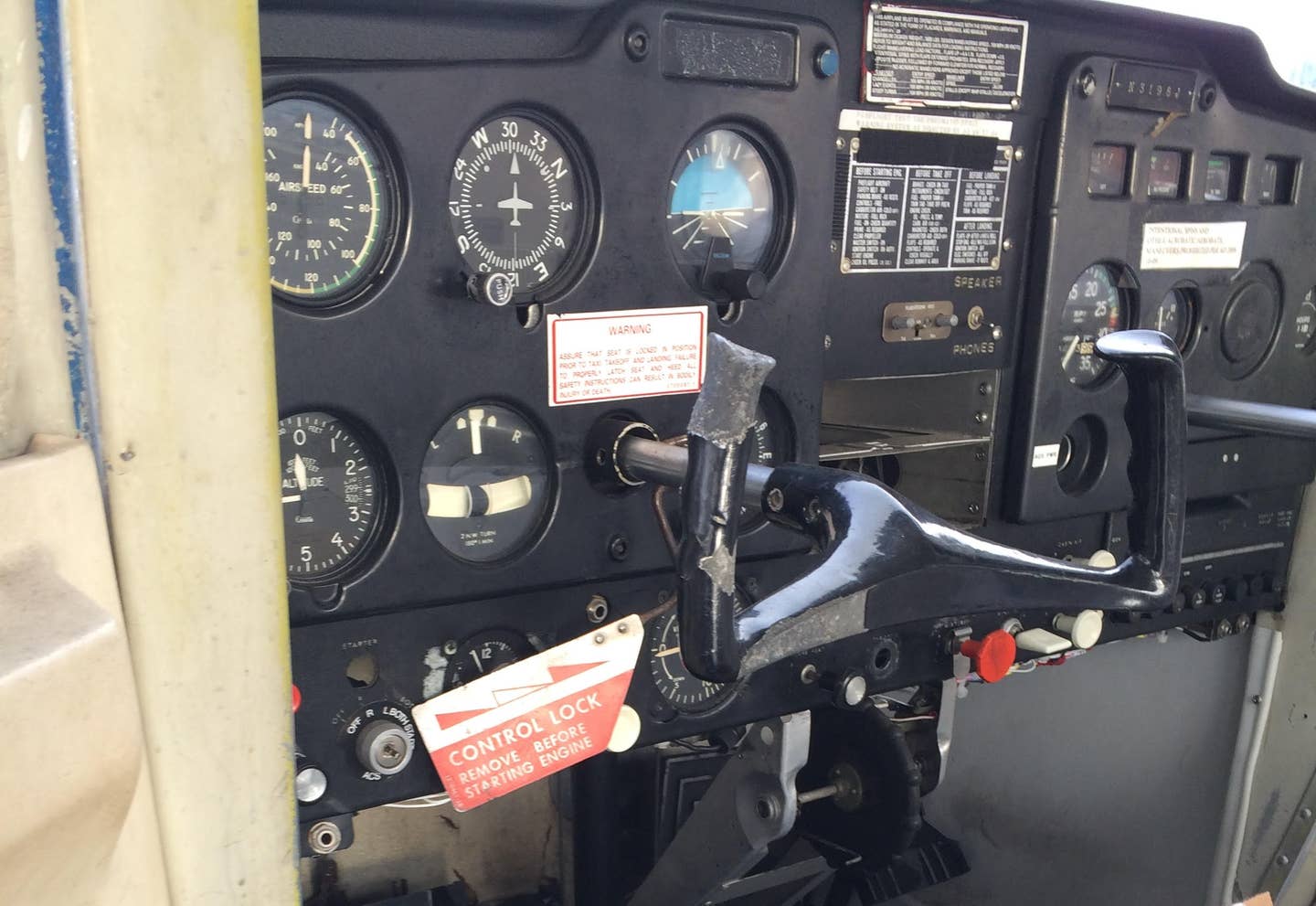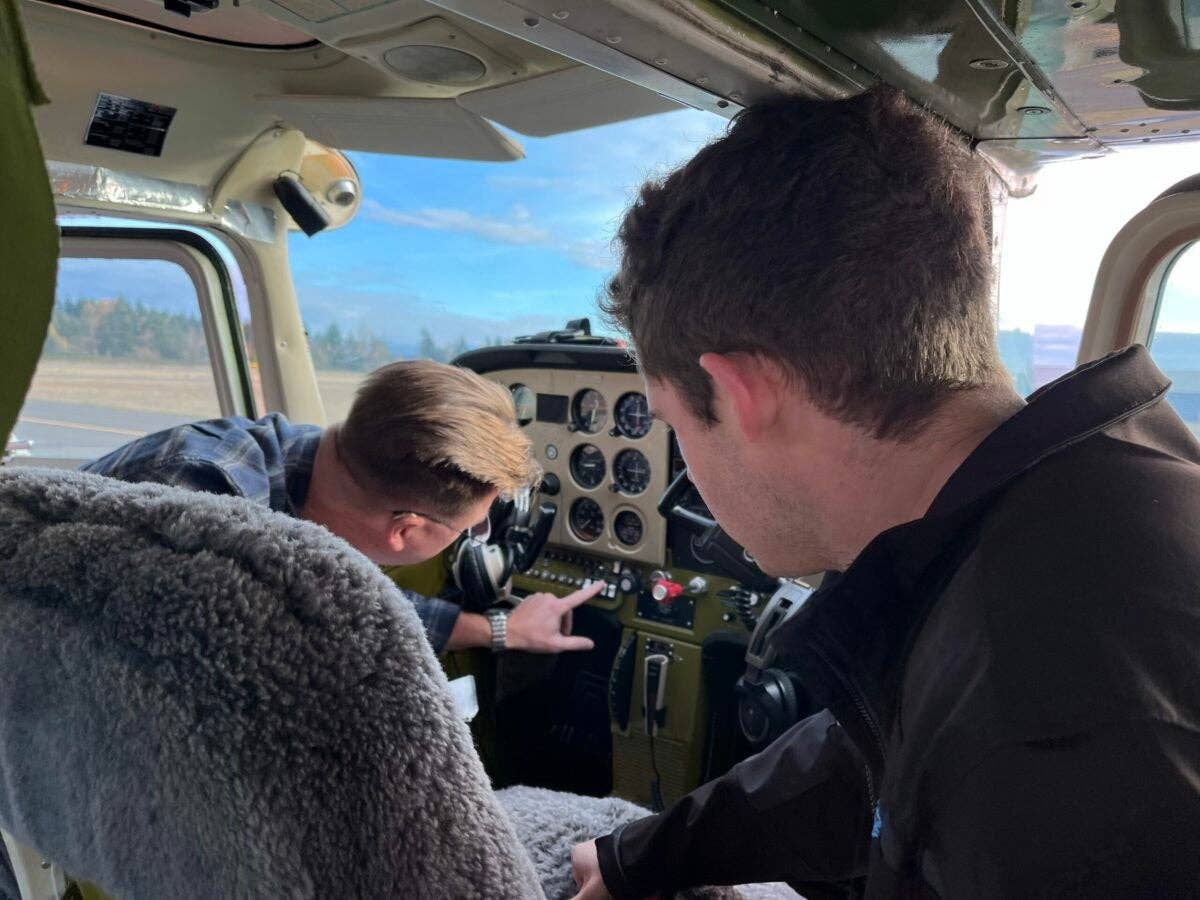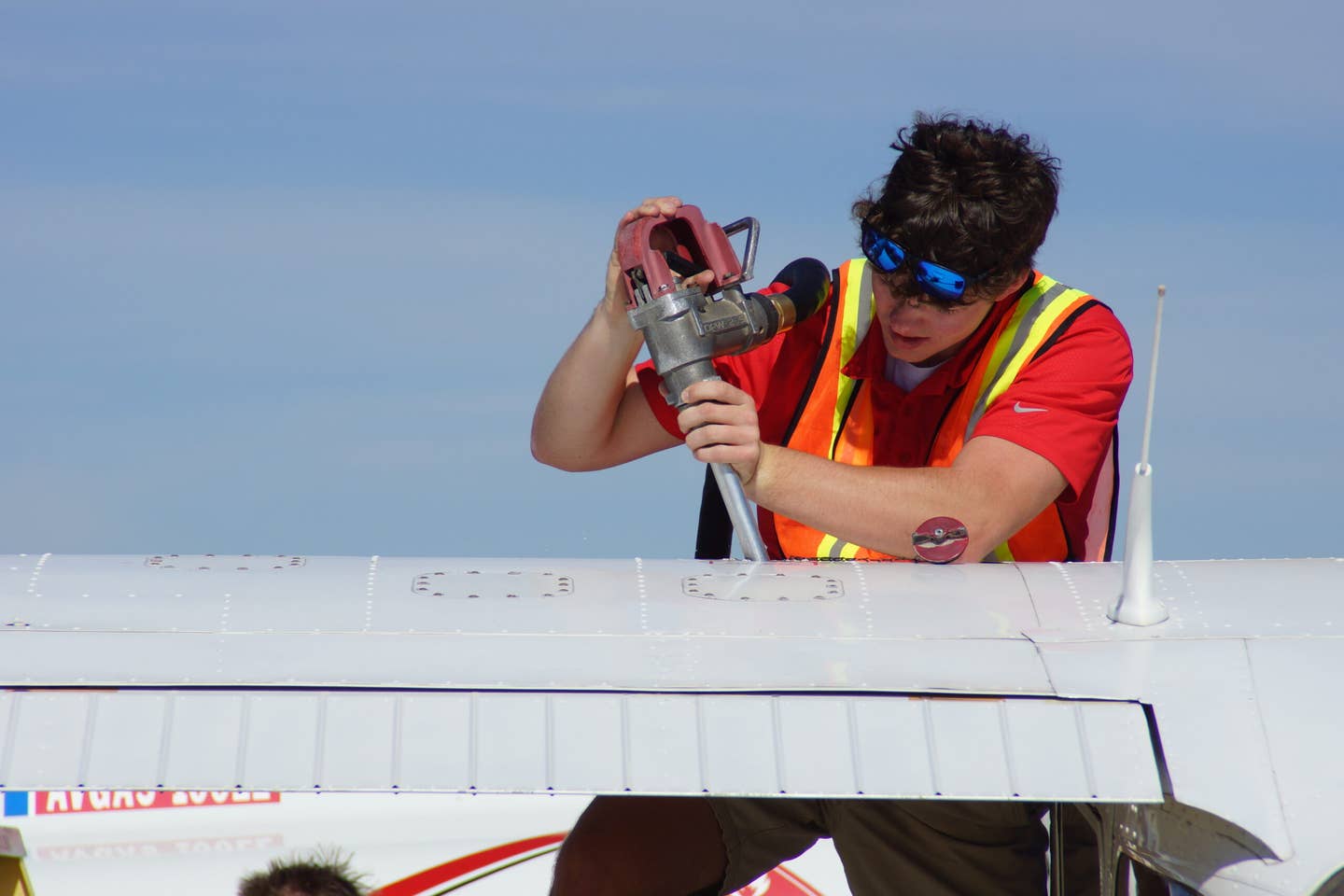Understanding Squawks and How to Best Handle Them
When there are issues with the aircraft, should you still fly?

When reporting squawks, it’s important to document the issue by noting the date, time, condition of flight, and, if appropriate, which instructor you were flying with when the issue happened. [Courtesy: Meg Godlewski
“I’m not sure if we can do the flight today,” the learner said, pointing to a placard in the aircraft that read “Landing Light INOP.” He noted the circuit breaker was also pulled.
“Do we need the landing light for this flight?” I asked.
It was 2 p.m. We would be in the air for approximately an hour, and sunset was 7:44 p.m. “Is it required?” This was a test, and I was overjoyed when the six-hour learner stated the landing light was not required for daytime VFR flight. He then pulled out the Federal Aviation Regulations (FAR)/Aeronautical Information Manual (AIM) and went right to 91.205 to verify and demonstrate that he knew where to look it up.
This was an important conversation as a week or so earlier there had been a spirited discussion (over the radio, no less) when a CFI from a competing flight school lectured one of my coworkers for having an inoperative rotating beacon on the Cessna 172 he was flying. Captain Lecture was in another airplane. They were both in the run-up area. The rest of us were in the FBO gathered around the radio like you see in those TV shows set in the 1930s, listening to Captain Lecture go off.
The whole thing was inappropriate. This wasn't a simple "your rotating beacon is inop." It was a full-on lecture about the regulations, the importance of squawking and placarding the unit if inop, how the FAA would shut down the flight school, etc., if this wasn't done properly. It blocked the frequency at the nontowered airport for several minutes.
The coworker replied that he was ferrying the aircraft to another airport to have the anti-collision beacon replaced, adding, "It's a 2000 model." That was a shorthand way of referencing—per 91.205—where it reads, "For small civil airplanes certificated after March 11, 1996, in accordance with Part 23 of this chapter, an approved aviation red or aviation white anti-collision light system. In the event of failure of any light of the anti-collision light system, operation of the aircraft may continue to a location where repairs or replacement can be made."
- READ MORE: Who Checks the Localizer/ILS at an Airport?
Therefore, the flight was legal.
Captain Lecture insisted the aircraft was not airworthy and therefore the flight was illegal and he would be talking to "a buddy of his who worked at the FAA."
Someone else jumped on the frequency with "Narc!" ending the conversation.
Should You Say Something?
I appreciate it when other pilots note an issue with the airplane that I can't see from the cockpit, such as the front tire that decided to go flat between the ramp and the runway. And I have been the person to warn another pilot about an issue, like a seat belt that was hanging out of the passenger's door. There's no reason to be a jerk about it.
As far as squawks go, as long as the items aren't required per FAR 91.205 or 91.207, the flight could, in theory and legally, happen. But ask yourself, does the missing or inoperative item get in the way of the mission? Is it a realistic distraction? For example, for daytime VFR flight, an attitude indicator is not required, but it is nice to have when teaching steep turns. A good CFI will have an alternate lesson planned, just in case.
If the missing or inoperative instrument is a distraction, there should be a way to mitigate it. I teach my learners to carry something they can use to cover up failed instruments at all times because of this. Partial panel is taught to instrument candidates, but not so much to VFR pilots— but it sure comes in handy.
I learned this when my attitude indicator failed in VFR conditions. Although I had the horizon out the windscreen to look at, it was difficult to ignore the attitude indicator showing the aircraft in a climbing turn to the right when we were in straight and level. Because of my experience I now teach partial panel to all my clients, VFR as well as IFR.
The learners can get creative to cover up the offending instruments. One of my pre-solo candidates used a dollar bill and a piece of chewed gum to cover up a failed attitude indicator during a VFR lesson. This wasn't a simulation—it was the real deal. The instrument worked normally for the first part of the flight, then during steep turns, it rolled over like a turtle—and stayed there. As he affixed the dollar bill to the face of the instrument, he said, "I'm covering up the heading indicator too because it's part of the vacuum system as well and probably isn't reliable." Learning had taken place.
Document and Report
The proper way to document and report squawks also needs to be taught. You've probably seen the internet joke about the military squawks: "something loose in the cockpit," with the response: "something tightened in the cockpit." Strive to be more precise.
You are better off to write down the issue and include the date, time, condition of flight, and, if appropriate, which instructor you were flying with when the issue happened or was noticed. This level of detail was requested by a certain mechanic at a busy flight school who noted what might seem insignificant to a pilot can be very helpful to the folks turning the wrenches.
The day of the dollar and the gum, the squawk detail read, "June 10, approx. 3:40 p.m. 4,300 feet, 2,300 rpm, steep turns, 24 minutes into flight attitude indicator tumbled, did not right itself after 10 minutes of straight and level. Flying with Meg."
The chief mechanic later thanked the learner, saying that there had been previous reports that the attitude indicator was "wonky," but the mechanic could not duplicate the issue on the ground.
As to the rotating beacon issue, the beacon was replaced and the FAA did not shut down the flight school, although we did get a visit from a safety inspector who asked about the incident. The boss showed proof that the beacon was properly squawked and placarded inop when the CFI ferried the airplane to an airport 23 nm away for repairs. The safety inspector assured he had not made a special trip for us—he was allegedly there to inspect an aircraft.
He seemed more concerned about Captain Lecture taking over the radio and blocking the frequency, saying, "As a CFI he should know better."

Subscribe to Our Newsletter
Get the latest FLYING stories delivered directly to your inbox






